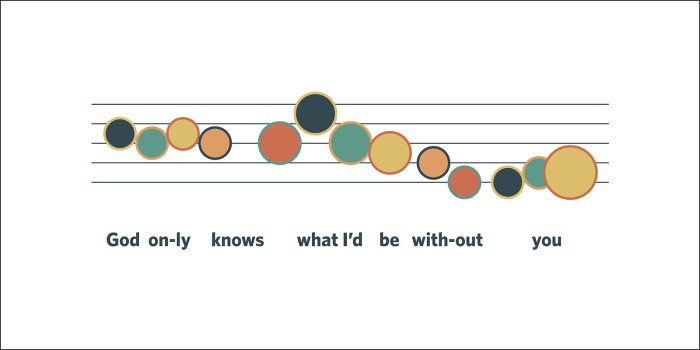As God is Not One SparkNotes takes center stage, this opening passage beckons readers into a world crafted with profound knowledge, ensuring a reading experience that is both absorbing and distinctly original.
This seminal work delves into the multifaceted nature of God, challenging traditional notions and inviting readers to question the very essence of the divine. With meticulous research and thought-provoking insights, the SparkNotes summary of God is Not One provides a comprehensive exploration of the historical, philosophical, and literary aspects of this groundbreaking text.
SparkNotes Summary

In “God is Not One,” Stephen Prothero argues that the concept of God is not a singular, unchanging entity, but rather a diverse and evolving phenomenon that has taken on many different forms throughout history. Prothero examines the ways in which people have conceived of God in different cultures and time periods, from the ancient Greeks to modern-day atheists.
He also explores the role that God has played in human history, from inspiring wars and conquests to providing comfort and meaning in times of need.
The Diversity of God Concepts
Prothero argues that there is no one definitive concept of God. Instead, the idea of God has been shaped by a variety of factors, including culture, history, and personal experience. As a result, there are many different ways to conceive of God, from the anthropomorphic deities of ancient Greece to the abstract and impersonal God of modern-day philosophy.
The Role of God in Human History
Prothero also explores the role that God has played in human history. He argues that the idea of God has been used to justify both good and evil, from inspiring wars and conquests to providing comfort and meaning in times of need.
Prothero concludes that the concept of God is a powerful force in human history, and that it is important to understand the different ways in which it has been used and understood.
Historical Context

The publication of “God is Not One” in 2007 coincided with a period of significant intellectual and religious ferment.
The early 21st century witnessed a growing skepticism toward traditional religious beliefs, particularly among younger generations. This skepticism was fueled by the rise of the internet and social media, which provided platforms for the dissemination of alternative viewpoints and critical perspectives on religion.
Intellectual Landscape
- Rise of New Atheism:The publication of books such as Richard Dawkins’ “The God Delusion” and Christopher Hitchens’ “God Is Not Great” popularized the concept of “New Atheism,” which rejected the existence of any god or gods and advocated for a secular worldview.
If you’re looking to dive deeper into the complexities of “God is Not One” by exploring the evolution of religious thought, consider checking out the APHG Unit 1 practice test . It offers insights into the historical development of religious beliefs, helping you further understand the ideas presented in “God is Not One.”
- Influence of Cognitive Science:Advances in cognitive science and neuroscience shed new light on the human mind and the role of religion in shaping our thoughts and beliefs.
- Growth of Comparative Religion:The study of comparative religion became increasingly popular, allowing scholars to compare and contrast different religious traditions and explore their similarities and differences.
Religious Landscape
- Religious Pluralism:The increasing interconnectedness of the world led to greater exposure to different religions, fostering a growing awareness of religious diversity and pluralism.
- Emergence of Non-Traditional Spiritualities:Traditional religious institutions faced challenges from the emergence of new spiritual practices and beliefs, such as mindfulness meditation and yoga.
- Fundamentalist Movements:In response to perceived threats to traditional religious values, fundamentalist movements gained traction in various parts of the world, seeking to preserve and enforce strict interpretations of religious texts and practices.
Key Concepts: God Is Not One Sparknotes

God is Not Oneexplores fundamental concepts that shape human understanding of existence and spirituality.
The book delves into the nature of God, questioning traditional monotheistic beliefs and proposing a multifaceted understanding of the divine. It examines the role of religion in shaping societies and individuals, and the search for meaning in a world where religious certainties are fading.
Nature of God
God is Not Onechallenges the notion of a single, all-powerful God. Instead, it suggests that the divine manifests in various forms and aspects. The book draws on historical and contemporary religious traditions to illustrate the diversity of human conceptions of God.
For example, the author explores the polytheistic beliefs of ancient Greece, where multiple gods represented different aspects of the divine. The book also examines the concept of a transcendent God in monotheistic religions, as well as the immanent God who is present within the world.
Role of Religion
God is Not Oneexamines the multifaceted role of religion in human societies. It argues that religion provides a framework for meaning-making, offering rituals, beliefs, and practices that shape human experiences.
The book discusses the positive aspects of religion, such as its ability to foster community, provide comfort, and inspire ethical behavior. However, it also acknowledges the negative consequences of religious extremism and intolerance.
Search for Meaning, God is not one sparknotes
God is Not Oneexplores the human search for meaning in a world where traditional religious beliefs are challenged. The book suggests that meaning can be found in personal experiences, relationships, and creative pursuits.
The author argues that the search for meaning is an ongoing journey, and that individuals must ultimately create their own path to fulfillment. The book encourages readers to embrace the unknown and find solace in the beauty and wonder of the natural world.
Comparative Perspectives

The perspectives on God and religion presented in “God is Not One” differ significantly from those of other religious traditions. While some similarities exist, there are also fundamental differences in beliefs and practices.
Beliefs about God
In “God is Not One,” the authors argue that there is no single, universal concept of God. Instead, they posit that there are many different gods, each with its own unique attributes and characteristics. This polytheistic view contrasts with the monotheistic beliefs of many other religious traditions, which hold that there is only one true God.
Practices of Religion
The practices of religion also vary significantly across different traditions. In “God is Not One,” the authors emphasize the importance of personal experience and individual interpretation in religious practice. They reject the notion of a single, authoritative religious text or set of doctrines.
This contrasts with the more structured and hierarchical practices of many other religious traditions.
Similarities
Despite these differences, there are also some similarities between the perspectives on God and religion presented in “God is Not One” and those of other religious traditions. For example, both recognize the importance of ritual and ceremony in religious practice.
Additionally, both emphasize the importance of ethics and morality in religious life.
Literary Analysis

In “God is Not One,” Stephen Prothero employs a diverse array of literary techniques and devices to convey his complex message about the nature of religious diversity.
Narrative Structure
The book is structured as a series of personal anecdotes and historical vignettes, which Prothero uses to illustrate his arguments about the different ways in which people experience and understand religion. This narrative approach allows him to engage readers on a personal level and to make his arguments more accessible and relatable.
Rhetorical Devices
Prothero also uses a variety of rhetorical devices to persuade readers of his arguments. These devices include:
- Anecdotes:Prothero uses personal anecdotes to illustrate his points and to make his arguments more relatable.
- Analogies:Prothero uses analogies to compare and contrast different religious beliefs and practices, helping readers to understand the similarities and differences between them.
- Rhetorical questions:Prothero uses rhetorical questions to challenge readers’ assumptions and to get them thinking about the nature of religious diversity.
Writing Style
Prothero’s writing style is clear, concise, and engaging. He uses vivid language and imagery to bring his arguments to life and to make them memorable. He also has a knack for storytelling, which makes his book a pleasure to read.
Overall Message
The overall message of “God is Not One” is that religious diversity is a fact of life and that we must learn to live with it. Prothero argues that we should not try to convert others to our own beliefs but should instead focus on understanding and respecting their differences.
Impact and Legacy

“God is Not One” sparked intense debates and discussions upon its release, leaving a lasting impact on religious thought and discourse. The book challenged traditional notions of monotheism, presenting a comprehensive overview of the diverse religious beliefs and practices worldwide.
Reception and Influence
“God is Not One” received critical acclaim for its scholarly rigor and accessibility, becoming a bestseller and influential text in the study of religion. It has been translated into numerous languages and used as a foundational work in university courses on religious studies.
The book’s insights have shaped the way scholars approach the study of religion, emphasizing the importance of comparative analysis and recognizing the diversity of human religious experiences.
Impact on Contemporary Thought
“God is Not One” played a significant role in shaping contemporary understanding of religion. It challenged the dominant narrative of monotheism, promoting a more nuanced and inclusive view of religious diversity. The book’s emphasis on the historical and cultural context of religious beliefs has fostered greater appreciation for the interconnectedness of religion and human society.
Influence on Interfaith Dialogue
“God is Not One” has facilitated interfaith dialogue by providing a common ground for understanding the different ways in which people experience and express their spirituality. By highlighting the similarities and differences between religions, the book has encouraged mutual respect and understanding, fostering a more harmonious coexistence among different faith communities.
FAQ Explained
What is the main argument of God is Not One?
The book argues that there is no single, universal concept of God, and that different cultures and religions have developed their own unique understandings of the divine.
Who is the author of God is Not One?
The book is written by Stephen Prothero, a professor of religion at Boston University.
What are some of the key concepts explored in God is Not One?
The book explores concepts such as the nature of God, the role of religion, and the search for meaning.